What is a Galaxy?
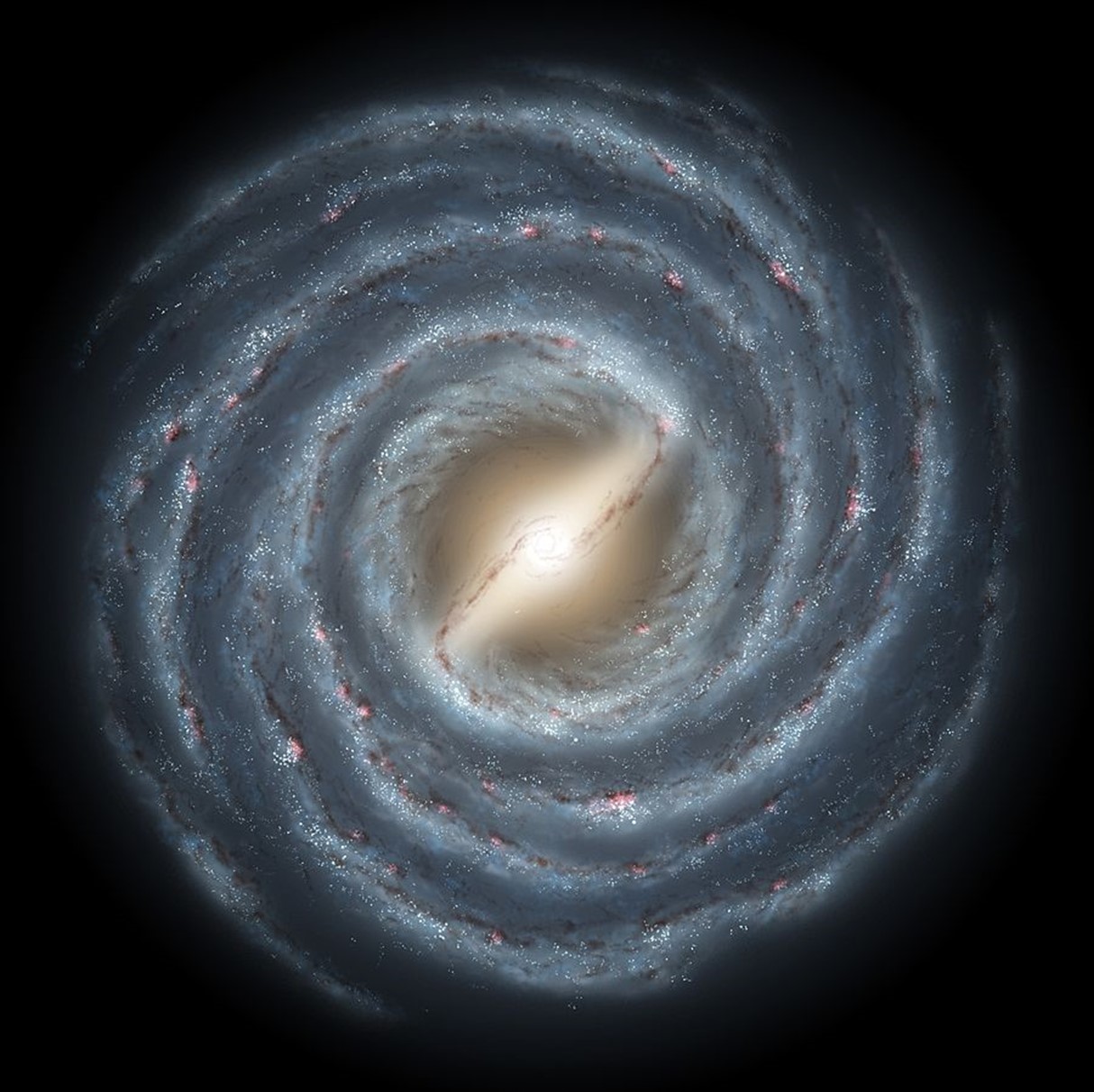
Before we begin to handle such a question as how many galaxies are there in the Universe, let’s first define what a galaxy is. A galaxy is a system of dust, gas, stars, and dark matter held together by gravity.
The word “galaxy” is from the Greek word galaxias which means “milky.” This is a reference to our own Milky Way—the first galaxy that we knew. As our knowledge about the Universe expanded, we discovered that the Milky Way is not alone. In fact, it is just one of the trillions out there.
In the past, galaxies such as the Andromeda Galaxy were called “nebulae.” It was thought that these nebulae were part of the Milky Way. By 1920, this long-held belief was challenged by the Great Debate. This debate discussed the nature of these “nebulae” and the expanse of the Universe as a whole.
In this debate, astronomer Heber Curtis referred to these so-called nebulae as “island universes” and that they are independent and separate from the Milky Way. Edwin Hubble later confirmed this claim.
Galaxies range in different shapes and sizes. Some of them are excellent sites for star formation. Most galaxies have supermassive black holes at the center. There are also galaxies that are interacting and are in the process of colliding with each other.
Types of Galaxies
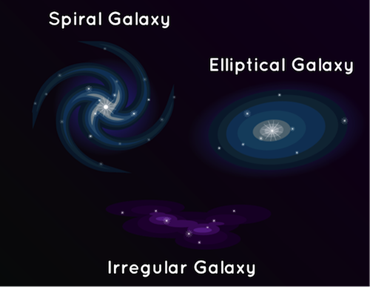
When it comes to size, those that contain a few million stars are called dwarf galaxies. Larger ones with trillions of stars are classified as giant galaxies.
Galaxies are also categorized according to their appearance: spiral, elliptical, and irregular.
- Spiral Galaxies: have disk-like shapes with central bulges and spiral arms (can be normal spirals or barred spirals)
- Elliptical Galaxies: have circular to elongated shapes
- Irregular Galaxies: neither spiral nor elliptical in shape
Aside from the main three types of galaxies, there are other classifications as well. These are peculiar galaxies, lenticular galaxies, and ultra-diffuse galaxies.
The Universe Defined
The Universe or cosmos is basically everything. According to NASA, it is all of the matter and energy in space. It includes galaxies, stars, planets, moons, asteroids, comets, and time. Most importantly, since we live on Earth, we are part of the Universe too.
The Universe also includes the things we cannot see. Since we are only a minute part of it, there is still much we have not understood about this very large place.
The stars, planets, moons, and every object we see only make up about 5% of the entirety of the Universe. The other 95% is still a big mystery. This invisible stuff is what astronomers call dark matter and dark energy.
The term “dark” there does not have anything to do with the color of this stuff. They are called so because they are practically invisible and scientists cannot observe them directly.
How Many Galaxies Are There in the Universe?
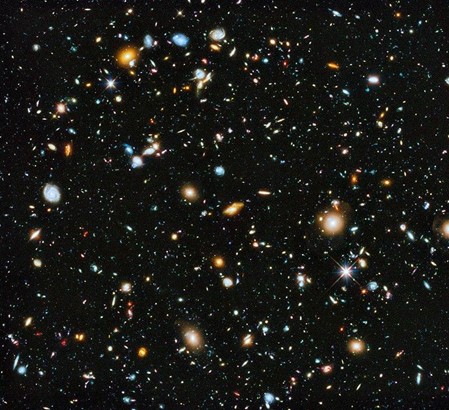
There are between 200 billion to 2 trillion galaxies in the observable Universe. I know that is rather ambiguous but that is down to various theories and our limited observation capabilities.
The Universe is a very big and mysterious place. Some think that it is infinite while others believe that it may have limits and boundaries.
Since we are only a very small part of the much bigger Universe, we cannot see its entirety. The only portion of the Universe that is visible to us is called the “observable universe.” We can think of it as a spherical region in space with us, the observer from Earth, at the center.
The Universe is 13.8 billion years old as revealed by the Planck mission of the European Space Agency (ESA) and many other observatories. Scientists were able to come up with this number through cosmic microwave background (CMB). This radiation is said to be a Big Bang remnant, making it the oldest light in the Universe as we know it. Imagine, this light took 13.8 billion years to reach us!
With this number, it is safe to say that the sphere of the observable Universe is around 28 billion light-years across. However, the edge of this sphere is far larger because of the expansion of the Universe. At present, the limit of the observable Universe is 46.5 billion light-years away. This means the observable Universe has a diameter of 92 billion light-years.
So what is within the seemingly vast voids of space?
There is no way to know the total number of galaxies, but experts have their best estimates.
In a study published in The Astrophysical Journal, Christopher Conselice (University of Nottingham) and his colleagues reveal that there are at least two trillion galaxies in the observable Universe.
Meanwhile, according to Mario Livio of the Space Telescope Science Institute, there are at least 100 to 200 billion galaxies. The New Horizons Space Probe also has the same estimates.
The distance between these galaxies is expected to grow as the Universe continues to expand. Galaxies of average size have around 100 million stars at a minimum, and at least one planet could be orbiting each star.
So Just How Big Is the Universe?
Best estimates say that the observable Universe is 92 billion light-years across. But how about the unobservable Universe?
Scientists at the University of Oxford did a study and found an even bigger number. According to the results, the Universe could be 250 times larger than the observable Universe. This means it may be 7 trillion light-years in diameter.
In the local sense, the solar system is part of the Milky Way. The Milky Way is part of the Local Group which is part of the bigger Virgo Supercluster. There is an even bigger structure than this called Pisces-Cetus Supercluster Complex.
Hubble Telescope Peered Into the Universe
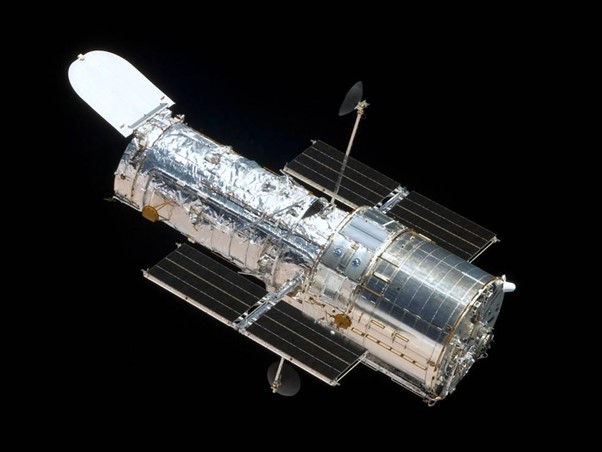
The Hubble Space Telescope is a modest-size telescope that is as long as a large school bus. It launched in 1990 and orbits Earth at an altitude of 547 kilometers (340 miles). Though it has been operating for more than three decades, Hubble remains one of the best telescopes that we have.
This telescope was named after Edwin Hubble. The American astronomer has made important discoveries. Among them is the fact that there are other galaxies other than the Milky Way. He also contributed to the topic of the expansion of the Universe.
Because of its location in space, the Hubble Telescope takes more detailed images compared to ground-based telescopes. Without the Earth’s atmosphere that changes the light from space, Hubble’s images are especially sharper. It has made more than 1.3 million observations since it launched.
A Look Into The Past
Not only does this telescope help us see what planets, galaxies, and other deep-sky objects look like. More importantly, the Hubble Space Telescope is like a time machine. But how so?
As Hubble takes images of different objects in space, it basically peered into the early Universe. Light takes time to travel and the things we see are actually what they looked like years ago.
When we look at images of the Large Magellanic Cloud (LMC), for example, we are looking at what it was like 160,000 years ago. Our largest spiral neighbor, the Andromeda Galaxy, is much older, as its light takes 2.5 million years to reach us.
Contributions to Science
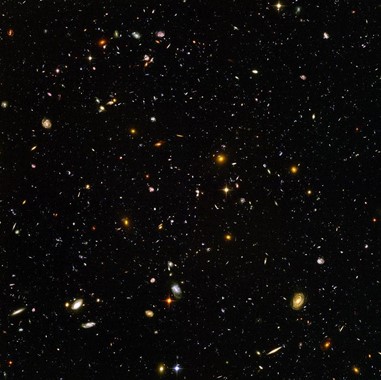
With its ability to spot very distant objects, the Hubble Space Telescope has greatly increased our understanding of the Universe. It has helped a lot in determining the age and the rate of expansion of the Universe.
In 1994, the Hubble Telescope captured the extraordinary event of Comet Shoemaker-Levy 9 colliding with Jupiter. It also discovered the moons Nix and Hydra of Pluto. Over time, Hubble has observed stars, black holes, nebulae, galaxies, and other deep-sky objects. It even took the first exoplanet image of Fomalhaut b.
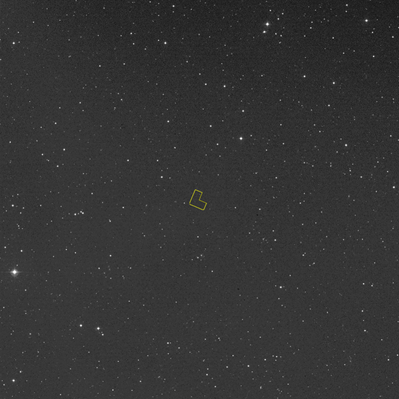
Perhaps the most fascinating of all is the Hubble Deep Field. From September 2003 to January 2004, Hubble looked at the seemingly empty space in the sky in the Fornax constellation.
Data from these observations reveal 10,000 faint galaxies that were not visible to ground-based telescopes.
Not only that, but they are also the most distant galaxies ever seen. This rich image not only helps us scale the Universe but also what it was like just after the Big Bang. The eXtreme Deep Field (XDF) version was released in 2012, revealing galaxies from 13.2 billion years ago.
James Webb Telescope As the Next Galaxy Spotter
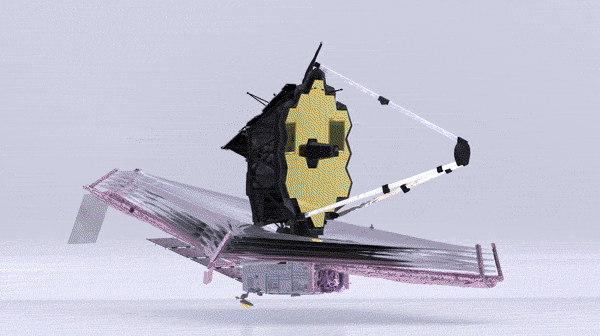
The James Webb Space Telescope (JWT) is Hubble’s successor. This is an infrared space telescope that is larger and more modern than Hubble. With the latter still working, these two will work hand in hand in sending valuable data on Earth to help us uncover more of the Universe.
The James Webb Telescope launched on December 25, 2021. Orbiting near the L2 point of the Sun, it can see through dust through infrared wavelengths. The science community is excited about what the new space telescope can discover. According to NASA astrophysicist Amber Straughn, it is “about 100 times more powerful than Hubble.”
The James Webb Telescope is larger than Hubble and is about the size of a tennis court. It also has a better ability to capture light. While Hubble’s mirror measures 2.38 meters (7.8 feet) across, the golden mirror of JWT has a diameter of 6.49 meters (21.3 feet).
Like Hubble, the JWT will search far and wide into the Universe, from stars to galaxies, and exoplanets. It will also look deeper down into history as it can look into the early Universe— around 250 million years after the Big Bang. This primordial period is called the “cosmic dawn.” In comparison, Hubble has gone as far as 400 million years after the Big Bang.
The Biggest Known Galaxies
IC 1101
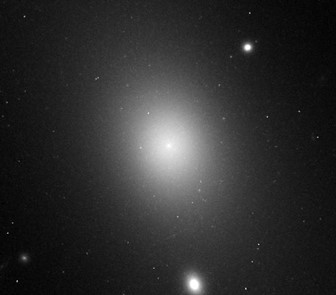
IC 1101 is known as the largest galaxy. It is a supergiant elliptical galaxy with an estimated 100 trillion stars. It is located 1.04 light-years away from us in the Virgo constellation.
This gargantuan constellation is roughly 50 times the size of the Milky Way. While our galaxy spans around 100,000 light-years across, IC 1101 has a diameter of 5.5 million light-years. It is characterized by a large diffuse halo.
The stars in IC 1101 are metal-rich. It is believed that a supermassive black hole, about 100 billion times as massive as the Sun, lies at the center of this galaxy.
Alcyoneus Galaxy
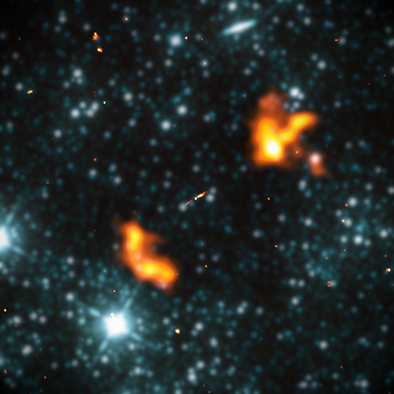
A new discovery challenges IC 1101 as the largest known galaxy. In February 2022, a radio galaxy called Alcyoneus was discovered through radio astronomy. Spanning at least 5 megaparsecs or 16 million light-years long, this structure is far larger than IC 1101.
This discovery is remarkable for many reasons. It is believed that a very large black hole resides in the galaxy’s center. Two jet streams were produced by this supermassive black hole which led to the discovery of this galaxy. According to astronomers, it is the first time that two large jets were observed from a single large galaxy.
In terms of size, it would take about 100 Milky Ways to fill this super-large structure that is the Alcyoneus galaxy.
The Smallest Known Galaxy
Segue 2
Segue 2 is a dwarf galaxy located around 110,000 light-years in the Aries constellation. This small galaxy is a satellite of our Milky Way. Aside from being small, it is also a very faint structure. For a galaxy, it is only about 800 times as luminous as the Sun.
There are about 1,000 stars in the Segue 2 galaxy. It is mostly populated by old stars. According to astronomers, this small and lightweight galaxy is bound together by dark matter. This characteristic is what sets it apart from smaller structures like star clusters.
Could We Ever Travel to a Different Galaxy?
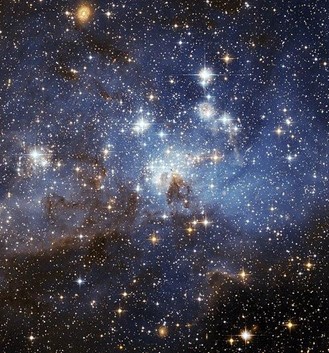
Hypothetically, we can travel to different galaxies. However, current technology has not yet reached the level of advancement needed to make intergalactic travels.
For intergalactic travel to be possible, we have to fly faster than the speed of light. This is a big challenge because we have not yet invented a spacecraft that can at least travel at the speed of light. Let alone move faster than it!
As of 2022, NASA’s Parker Solar Probe is the fastest object that we have sent into space. It travels at a speed of 535,000 km/h or 330,000 mph—astonishingly fast for the human context. However, it is still very slow when it comes to how big the universe is. Still, it is only 0.05% compared to the speed of light.
Challenges to Intergalactic Travel
Even if we travel at the speed of light, reaching even the nearby galaxies will take us thousands to millions of years. In comparison, the average human lifespan is only around 70 years.
The distance between galaxies is so big that we cannot reach them in time even if we travel at the speed of light.
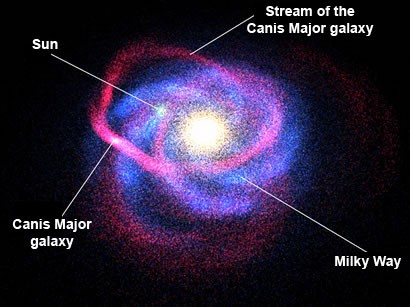
Take for example our closest neighbor, the Canis Major Dwarf Galaxy. This irregular galaxy is located only 25,000 light-years from the solar system. The satellite galaxy, the Large Magellanic Cloud is around 160,000 years away. Meanwhile, a voyage to the great Andromeda Galaxy would take millions of years!
A journey this long would need a huge amount of fuel. While there are already solar-powered spacecraft, the space vehicle would get less energy from the Sun as it leaves the solar system. Entering the unfamiliar environment of other star systems would be a challenge too.
And of course, we need lots of food and water for a very long trip. Water is not abundant in space— and neither is food.
To date, the farthest manmade spacecraft that has left Earth are the Voyagers. Voyager 1 entered the interstellar medium in 2012 and Voyager 2 joined it in 2018. Even so, these two are still technically in the solar system. It will take them about 300 years to enter the Oort Cloud. If their fuel allows them to, they will not exit this cloud for another 30,000 years.
The Oort Cloud is a hypothetical structure believed to be the boundary of the Sun’s gravitational influence.
How About Wormholes?
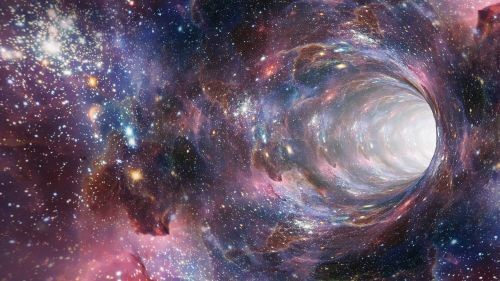
An interesting solution for intergalactic travel might be the hypothetical wormholes. Though there is still no evidence that these things exist, wormholes were part of Albert Einstein’s general theory of relativity. He mathematically predicted it, just like he did with black holes. Now, the image of the Messier 87 black hole is solid proof that black holes do exist.
According to Einstein’s theory, a wormhole is like a tunnel between two points in space-time. People believed that this might be the shortcut that we are looking for to travel to different galaxies.
Our technology is limited and the existence of wormholes is yet to be confirmed or refuted. So for now, traveling to another galaxy remains a thing in science fiction.
Are There Other Universes?
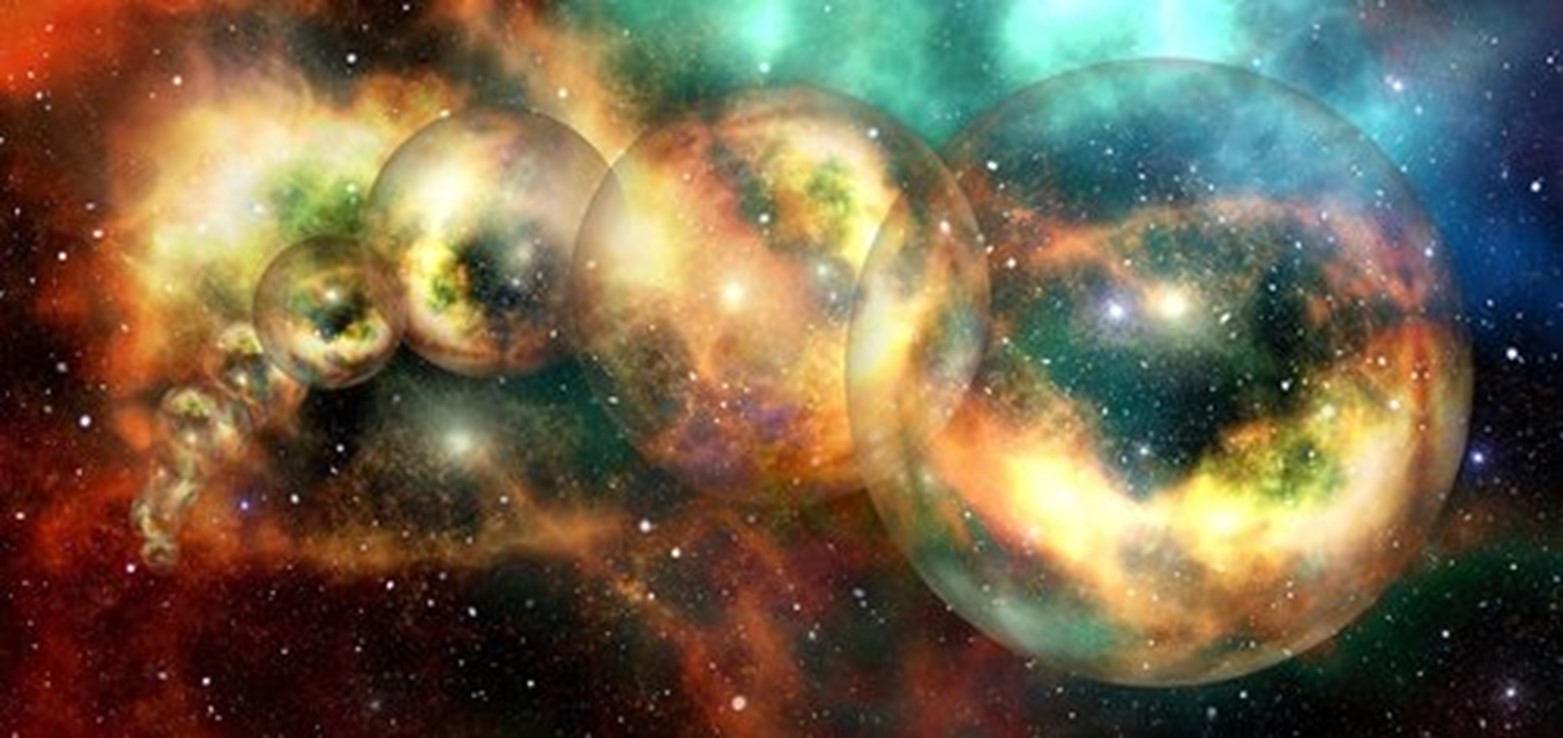
The multiverse theory will make for a good sci-fi movie. If confronted with the sheer vastness of the Universe, we cannot help but ask if there are other universes out there.
Some researchers say that other universes might be possible if we consider cosmic inflation. According to this theory, the Universe expanded rapidly, even exponentially, after the Big Bang. As a result, different “pockets” might have broken far away that ultimately become different Universes.
Still, these are just theories and, for now, there is no way to confirm or disprove these ideas. What we know for sure is that there is still much we do not know about our Universe. With that said, it would be more sensible to know more about it before we start searching for other Universes—or if they really exist.
More Facts About Galaxies and the Universe
- The observable Universe is only 0.2 billion years older than the Milky Way. Current estimates on the age of the Universe is 13.8 billion years and the Milky Way is around 13.6 billion years old. Our solar system is much younger at 4.5 billion years old.
- No matter where we are and what we are doing, outer space is only 100 kilometers (62 miles) above our heads. Meanwhile, it is also just 12,800 kilometers (8,000 miles) below our feet too!
- We have uncovered only 5% of the Universe. Of the remaining 95%, around 27% is thought to be dark matter and 68% is dark energy.
- Dark energy and dark matter are like two opposing forces. While dark energy speeds up the expansion of the Universe, dark matter slows it down. Dark matter is believed to be the invisible thing that holds the Universe together.
- Dark energy appears to be increasing as the Universe ages. This finding was revealed in a study about the distances of quasars. This means the expansion of the Universe is accelerating.
- The Universe is expanding faster than the speed of light due to cosmic inflation. Numbers show that the Universe is expanding at a rate of 68 kilometers per second per megaparsec (one megaparsec = 3.26 million light-years).
- Everything moves in space, and so does our Milky Way Galaxy. The Milky Way and the Andromeda Galaxy are the largest in the Local Group. Because of that, they orbit each other around the center of mass. In turn, the Sun orbits around the center of the Milky Way.
- Galaxies are rarely solitary, comprising only 5% of all the known galaxies. For the most part, they are commonly found in groups and clusters. Mergers and collisions often occur within these clusters since they are gravitationally bound.
Sources:
https://hubblesite.org/science/galaxies
https://astronomy.com/news/2020/03/whats-the-difference-between-dark-matter-and-dark-energy
https://exoplanets.nasa.gov/what-is-an-exoplanet/what-is-the-universe/
https://www.space.com/24073-how-big-is-the-universe.html
https://bigthink.com/hard-science/is-the-universe-infinite/
https://www.vox.com/science-and-health/22664709/james-webb-space-telescope-launch-date-december-science-hubble
https://en.wikipedia.org/wiki/IC_1101
https://www.space.com/25303-how-many-galaxies-are-in-the-universe.html#section-what-about-other-universes
https://www.rmg.co.uk/stories/topics/what-has-hubble-space-telescope-discovered
https://www.nasa.gov/audience/forstudents/5-8/features/nasa-knows/what-is-the-hubble-space-telecope-58.html
https://home.strw.leidenuniv.nl/~oei/
Image Sources:
What is a Galaxy?: https://upload.wikimedia.org/wikipedia/commons/thumb/0/09/Milky_Way_2005.jpg/900px-Milky_Way_2005.jpg?20140419215519
Types of Galaxies: https://spaceplace.nasa.gov/galaxy/en/galaxy-shapes.en.png
Hubble Telescope Peered Into the Universe: https://www.nasa.gov/sites/default/files/styles/full_width/public/thumbnails/image/hst-sm4.jpg?itok=mMVh7Hg6
Contributions to Science: https://upload.wikimedia.org/wikipedia/commons/thumb/0/0d/Hubble_ultra_deep_field_high_rez_edit1.jpg/800px-Hubble_ultra_deep_field_high_rez_edit1.jpg
Deep field location:
https://blogs-images.forbes.com/startswithabang/files/2018/10/blank-sky.gif?
IC 1101: https://upload.wikimedia.org/wikipedia/commons/f/fd/IC_1101_in_Abell_2029_%28hst_06228_03_wfpc2_f702w_pc%29.jpg
Alcyoneus Galaxy: https://home.strw.leidenuniv.nl/~oei/GRGAlcyoneusIRBlueRadioOrange.png
Could We Ever Travel to a Different Galaxy?: https://upload.wikimedia.org/wikipedia/commons/thumb/8/87/LH_95.jpg/495px-LH_95.jpg
Wormholes: https://storage.needpix.com/thumbs/wormhole-2514312_1280.jpg
Are There Other Universes?: https://storage.needpix.com/thumbs/parallel-world-3488497_1280.jpg